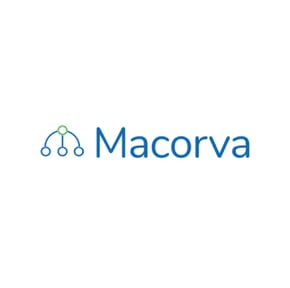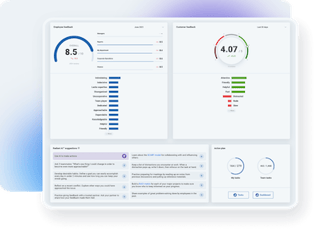Employee surveys are valuable tools for gaining insight into employee work experience, and they also aid in the development of a road map for improving engagement. However, an employee survey is only as good as the platform on which it’s delivered, the quality and relevance of the questions asked, and the follow-up to the survey. Research shows that even in 2023, only 32% of employees are actively engaged. So how should HR managers go about boosting employee survey participation?
Asking for direct feedback requires careful preparation and a survey design that elicits the clearest, most actionable responses. Here are nine ways to ensure you receive the most useful feedback from your next employee survey:
Conducting employee surveys is about more than asking questions and collecting responses. An effective employee survey platform offers a seamless way of soliciting employee feedback, analyzing results, and displaying trends. When the best of technology and talent management come together to form a dynamic employee survey solution, there’s an opportunity to better measure and act on employee feedback. And eliciting great feedback isn’t solely an HR responsibility.
According to research by Gartner, 47% of HR leaders say employee experience is one of their top priorities in 2023, while 44% do not believe their organization has a compelling career path. This highlights a growing need for organizations to implement employee engagement measures that include annual surveys, pulse surveys and other digital feedback mechanisms.
Employee survey software offers a secure way to hear and measure the voice of the employee, and it delivers the following benefits:
- Allows for specific questions to go to certain employee groups—for example, asking managers and individual contributors different sets of questions
- Can be designed to deliver employee surveys on a preset schedule
- Offers employees more assurances of anonymity
- Includes dashboards and reports that boil down multiple data points, making the feedback easy to understand
- Allows employees to access cloud-based surveys from anywhere
By taking advantage of these software capabilities and combining HR expertise with IT skills, organizations can implement a robust employee listening approach that provides a voice to all employees and generates data-driven insights to guide better decision making.
Make Questions Direct
Confusing, vague questions will yield only vague feedback. Questions that ask more than one thing at a time or use terminology that employees don’t understand will also limit your opportunities to get direct feedback. Each survey question should always ask one thing, clearly, and without the risk for misinterpretation. That way, when you receive the feedback, it’s easier to understand and measure. Some good ideas for asking direct questions include:
- Keep questions short and concise. For example, "How satisfied are you with the cleanliness of the office?" rather than a long paragraph.
- Use simple language. For instance, say "beginning" instead of "inception."
- Spell out any acronyms or abbreviations. For example, don't assume employees know that DE&I means Diversity, Equity, and Inclusion.
- Give examples to clarify the question's intent. "How satisfied are you with our training programs (e.g. new hire orientation, ongoing professional development workshops)?"
- Avoid biased wording that leads people toward a response. Stay neutral. "How satisfied are you with our current work-life balance policy?" rather than "Our work-life balance policy is great, isn't it?"
- Focus each question on one topic. Don't ask about multiple things.
- Provide context if needed. Some issues may require explanation.
- Check that questions make logical sense and flow well. Remove ambiguity.
- Consider audience understanding and perspective when writing questions.
Make Questions Objective and Unbiased
When creating employee surveys, it's really important to make sure your questions don’t assume what your employees think or feel. Instead, your questions should be neutral. They shouldn't push your employees to answer in a certain way.
For example, let's say your company just started offering new wellness benefits. You might be tempted to ask, "Do you like our new wellness benefits?" But this question kind of nudges your employees to say yes.
A better way to ask this question would be, "What has been your experience with our new wellness benefits?" This question doesn't assume anything. It just asks for the employee's experience.
When you ask unbiased questions like this, your employees are more likely to give you honest answers. They won't feel like they need to tell you what you want to hear. Instead, they'll tell you what they really think and feel. This will give you better information to help improve your company.
Don't Ask Yes/No Questions
Just like in a job interview, asking open-ended questions can give you more detailed and direct answers than simple yes/no questions. Open-ended questions are a powerful tool that let employees have the freedom to elaborate on their experiences and perspectives.
For instance, if you ask, "What do you think is necessary to excel in this environment?" you'll get more direct and comprehensive answers. You might hear about the need for teamwork, communication skills, or a positive attitude. This is much more informative than if you were to ask, "Does your boss always set you up for success?" This yes/no question doesn't leave much room for explanation or detail.
A good tip to remember when crafting your questions is to avoid using absolute terms like "always," "never," or "every." These words can box in your respondent, limiting the range of their answers. Instead, use more flexible descriptors like "how much" or "how often." These phrases invite a more nuanced response, allowing the respondent to provide a more accurate picture of their experiences. This way, you can gather more valuable and insightful feedback.
Survey at the Right Frequency
Employee surveys are a helpful resource for understanding what's happening in your organization. They should be done often enough to catch any big changes, but not so much that they annoy your employees. Remember, the main goal of these surveys is to understand and help your employees. You can do this by taking action based on their feedback.
If your organization can quickly act on feedback, then pulse surveys, which are done every day, can be a big help. But don't assume that doing surveys more often always means better results. To get the most out of the employee survey at your company, your employees need to see it as a way to make real change. Think about how your organization is set up and how fast it can act, and choose a survey schedule that matches this. When your employees see real action coming from the survey, they'll be more likely to give useful feedback, no matter how often you do the survey.
New AI technology can also be a big help in this process. It can help you make personalized reports for managers. This means that each manager gets a report that's made just for them, based on the data from their team. This can help them understand the data faster and take action more quickly. With this approach, the feedback from the surveys can be used right away to make positive changes in the organization, showing your employees that their feedback is important and can lead to real change.
Keep the Survey Short
Surveys are a great tool for gathering information and feedback. However, a survey that is too long can feel overwhelming and may discourage people from completing it. It's important to strike a balance between getting the information you need and keeping the survey quick and easy to complete. There's no magic number for how many questions a survey should have, but people are generally more likely to answer if there are only 10 or 20 questions, rather than a daunting 100 or more.
Here are some strategies to keep your survey manageable and effective:
- Group Questions: Organize your questions into specific topics. This allows you to focus on certain areas from time to time, rather than asking about everything all at once. This approach can make the survey feel less overwhelming and more focused.
- Practice Run: Conduct a "dry run" of the survey to gauge how long it takes to complete. If it takes too long, you'll know that you need to reduce the number of questions.
- Test Different Lengths: Experiment with surveys of different lengths. Keep routine surveys exciting by comparing the quality of the responses and the response rates to find the most effective length. This can help you find the perfect balance that gets you the information you need without discouraging people from participating.
Ensure Anonymity
Being anonymous means you can share your thoughts without anyone knowing it's you, which is incredibly important in a work setting. It lets employees give honest feedback without being scared or feeling pressured. When employees know their comments are anonymous, they're more likely to tell the truth. This is especially true if they're talking about their boss or someone else in charge.
Being anonymous also lets employees share their full experience. They don't have to leave anything out. This is particularly helpful when several people are giving feedback to one person. The person getting the feedback will hear exactly what others think about working with them. They get the real story, not something that's been changed by a coworker or boss.
Cover Important, Relevant Topics
The value of conducting an employee surveys] should not be squandered on irrelevant questions or topics that can be addressed differently. It's crucial that the survey questions remain on the intended subject and avoid straying into unrelated areas. For instance, while it might be enjoyable to ask about cafeteria menu items, such questions aren't particularly relevant in a survey designed to explore employees' relationships with their managers.
To ensure your survey stays on track, consider the following steps:
- Carefully think about potential topics: Before drafting your survey, take some time to brainstorm possible areas of interest. This will help you create a comprehensive list of topics that are relevant to your employees and your organization.
- Prioritize your topics: Not all topics are created equal. Some may be more pressing or relevant than others. Prioritize your list based on what you believe is most important to your employees and your organization.
- Group related topics together: This will help keep your survey organized and focused. By grouping related topics together, you can ensure that your survey flows logically and covers all the necessary areas without veering off course.
By following these steps, you can create a focused, relevant survey that effectively gauges your employees' experiences and relationships within the workplace.
Share and Act on the Feedback
One of the most effective ways to foster a positive work environment is by actively sharing and acting on employee feedback. Instead of letting valuable insights vanish into oblivion, it's crucial to provide employees with opportunities to see their feedback being put into action. This not only promotes a culture of transparency but also serves as a practical guide for future actions that employees can anticipate.
Key points to consider include:
- Timely Follow-up: It's essential to act on feedback promptly. If there's a significant delay between the survey and the follow-up, employees might start doubting the company's commitment to listening to their concerns.
- Well-planned Actions: When employees witness their feedback being translated into well-thought-out actions, they're more likely to provide honest, direct feedback in future surveys.
- Use of Employee Surveys: These are invaluable tools for gathering meaningful feedback. Crafting relevant questions that encourage employees to share their experiences with their work, manager, and coworkers can yield useful insights.
- Right Survey Software: With the appropriate employee survey software, you can gather useful feedback, provide necessary follow-up, and ultimately boost employee engagement in the workplace.
In conclusion, the process of sharing and acting on feedback is not just about collecting data. It's about showing employees that their opinions matter and that their input can lead to tangible changes in the workplace. This approach can significantly enhance employee engagement and overall job satisfaction.
To learn more about Macorva EX and how you can extract maximum value from your employee data, watch this instant demo video .






